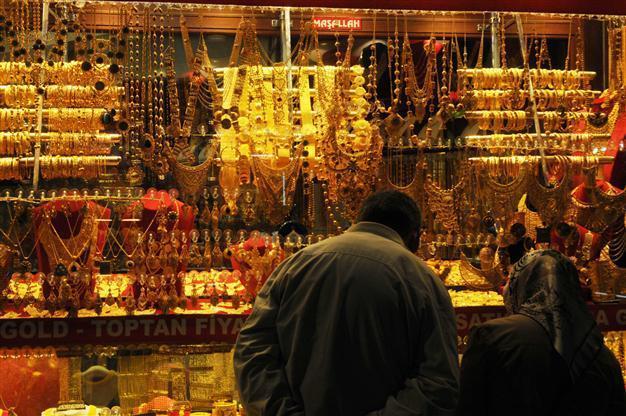Turkish gold demand plunges by 42 percent
LONDON - Reuters
 Turkey saw its gold bar and coin demand fall 42 percent to 27.2 tons in the first quarter of 2014 due to a weaker currency, consumption-limiting measures and price uncertainty amid the lowest drop in international demand in four years, the World Gold Council report showed on May 20.
Turkey saw its gold bar and coin demand fall 42 percent to 27.2 tons in the first quarter of 2014 due to a weaker currency, consumption-limiting measures and price uncertainty amid the lowest drop in international demand in four years, the World Gold Council report showed on May 20.The report revealed gold-loving Turkish consumers, who see the precious metal as a safe investment tool and a much-loved ornamentation, scaled back demand due to uncertainty over the price outlook as well as some local developments like the weakening of the Turkish Lira and installment limitations introduced by the country’s banking watchdog, the Banking Regulation and Supervision Agency (BBDK).
While jewelry purchases in the country fell from 16.5 to 14.5 tons, bar and coin investment in the country recorded an even steeper fall of 58.2 percent from 30.7 tons.
The World Gold Council’s report on gold trends in the first quarter said “the currency weakness in Turkey kept lira prices elevated,” adding largely political factors were also at play in suppressing demand in the market.
“Weakness in the lira pushed up local prices, which drew out a wave of profit-taking and saw investors preferring to invest in dollar- and euro-denominated assets,” the report said.
However, it also said the country was expected to witness a surge in demand in the second quarter, citing consumer behaviors and the busy wedding season in the summer.
“Reports confirm that investors remain engaged in the market and are keen to re-enter at the right level,” the report said.
Moreover, the BDDK’s ban on installment payments while buying gold products with credit card, which came into effect on Feb. 1, also curbed the demand during the period.
The BDDK launched the measures to curb consumer loans and the use of credit cards to pay for goods through monthly installments in the hope of restricting the country’s growing inflation and current account deficit.
Turks had rushed to buy gold in 2013 to benefit from bargain prices after investors began pulling money from the slumping raw material markets following the U.S. Federal Reserve’s announcement of plans to wind down its bond-buying. Large funds began selling gold, which decreased the prices even more.
Global coin, bar demand at record low
Global demand for bars and coins slumped 39 percent on year to 283 tons in the January-March quarter, the lowest level in four years, even though overall demand remained almost unchanged from last year’s same period at 1,074 tons.
Gold demand in major consumers China and India fell in the first quarter from the previous year’s record levels, though a drop in sales from bullion-backed investment funds kept overall demand steady.
“Demand for bars and coins was 283 tons in the quarter, a fall of 39 percent on the same time last year,” the report said.
Consumer gold demand in top buyer China fell 18 percent to 263.2 tons, with Chinese demand for gold coins and bars down 55 percent in the first quarter, offset only partially by a 10 percent rise in jewelry off-take.
Indian consumer demand was down by just over a quarter to 190.3 tons, with gold jewelry consumption dropping 9 percent and coin and bar buying down 54 percent.
















